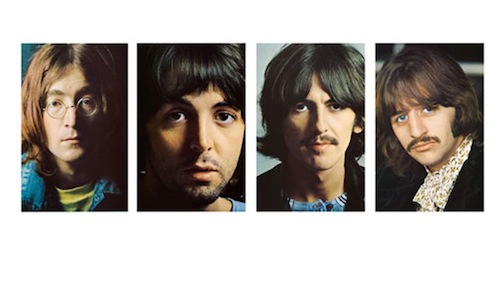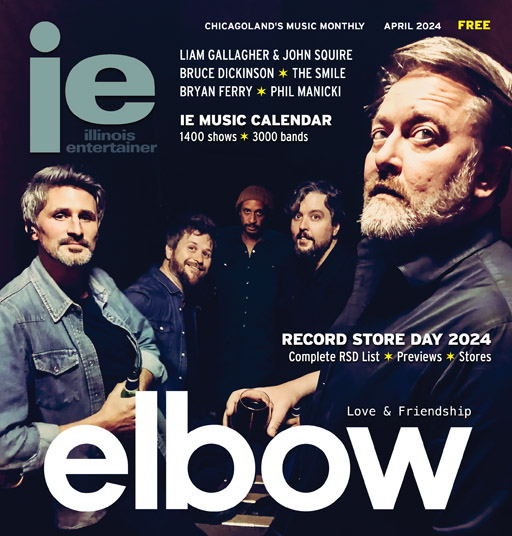Spins: The Beatles – The White Album at 50
 The Beatles
The Beatles
The Beatles (aka The White Album) anniversary editions
(Apple/Universal)
Following 2017’s 50th anniversary retooling of Sgt. Pepper’s Lonely Hearts Club Band, producer George Martin’s son Giles Martin takes a deep dive into the original White Album reels for a revelatory remix. Pepper’s remix incited heated debate. On one side were fans (and even crucial players including late engineer Geoff Emerick) who considered the remix sacrilegious akin to repainting the smile on the Mona Lisa. Others saw the effort as a refreshing way to revisit classic songs and performances with new insight. The majority of Beatles fans buying these deluxe anniversary releases will have at least one copy of the original mix on hand, casting the new anniversary editions as companion pieces. Modern technology allows longtime listeners to hear details that were buried decades ago in the original mix. If these sets spark critical listening and reexamination of the songs, many including the surviving band members will likely count that in the “win” column.
If there’s a divisive Beatles album, this is it. The fractious nature of The Beatles (a.k.a. The White Album), however, is a substantial contributor to its enduring fascination on its 50th anniversary. During the 1968 recording sessions following the return from a collective trip to India, tensions within the band coalesced. The results were a sprawling two-album collection of less-collaborative efforts by the Fab Four. The White Album offers glimpses of individual strengths (and occasional B-level efforts) among the band before John, Paul, George, and Ringo splintered into solo careers.
The 1987 CD master and 2009 CD re-master were used for comparison to Martin’s new mix. Although the original LP mixes served as the model, the differences in sonic breadth are not subtle, particularly in the low end. Paul McCartney’s (sitting in for Ringo Starr) drum fills thump and ring through rowdy rocker “Back in the USSR,” and Paul McCartney’s bass guitar is heard clearly for the first time. At the other end of the spectrum, John Lennon’s spacefaring “Dear Prudence” is crystalline and trippier. The proto-glam “Sexy Sadie” is beautifully balanced and overflowing with detail due to a clearer separation of the piano, background vocals, and George Harrison’s guitar. Harrison’s “While My Guitar Gently Weeps” benefits from the balanced placement of Starr’s drums, meatier rhythm guitar, and the bite of Eric Clapton’s lead work.
Furthermore, the refreshed vocal sounds like someone has lifted a towel from Harrison’s face. Even the protest pop of McCartney’s sparse and elegant “Blackbird” is elevated with a treatment with voice and guitar occupying the same intimate space, and a richer blend of stacked vocals in the chorus. “Ob-La-Di, Ob-La-Di” is less dense and claustrophobic in the midrange, with lively group vocals, sparkling piano, saucy saxophone, and hip-swinging bass.
Despite the meticulous care evident in the main album’s remix, the hidden attraction reveals itself as listeners follow the rabbit hole downward into a bevy of enticing extras. The four-LP set of half-speed mastered vinyl includes two platters featuring the Esher Demos, 27 songs in formative stages recorded at George Harrison’s home studio. Although light on Starr’s presence, the demos are well worth repeated play. The acoustic demo for “Back in the U.S.S.R.” emphasizes the song’s roots in the blues, fused with its summery Beach Boys-styled bridge. Vocal clowning by Paul and George provides a light mood, heightened when the pair giddily sings the guitar solo as a placeholder. Lennon’s solo acoustic “Dear Prudence” is solemn and psychedelic, until a “whoops!” slips into the mix, and the song takes a turn into uptempo folk and spoken-word tomfoolery. Lennon’s ad-lib describes the tale behind the song, centered upon the Beatles’ recent experience with the Maharishi Mahesh Yogi in India. Such casual glimpses reveal the musicians’ personalities, clever minds, and instinctual savvy. Furthermore, they contradict Lennon’s assessment of the White Album as “the sound of the Beatles breaking up,” when it seems like they’re having such a great time being creative together.
McCartney’s “Ob-La-Di, Ob-La-Da” is rendered as jangly, Latin-tinged acoustic guitar pop more closely akin to Badfinger than the barrelhouse piano version heard on the final album. Harrison’s “While My Guitar Gently Weeps” retains its shape, but becomes more intimate in its acoustic demo without Clapton’s guitar and McCartney’s piano. Alternate lyrics further reveal the classic song’s evolution and Harrison’s emergence as a top-flight songwriter with arguably the best composition on the album. It’s a trick Harrison would pull again on the Abbey Road album and extend with his triple solo album All Things Must Pass. Lennon’s “Everybody’s Got Something to Hide Except for Me and My Monkey” plays as an acoustic Bob Dylan-style spoken ramble.
The Esher Demos also include a clutch of non-album tracks like Harrison’s “Sour Milk Sea” and McCartney’s embryonic “Junk.” Fans can debate whether these would have been better inclusions than sound collage “Revolution 9.” Lennon’s Rishikesh tale “Child of Nature” was a companion to McCartney’s “Mother Nature’s Son” that eventually became “Jealous Guy” on the landmark Imagine album. “Mean Mr. Mustard” and “Polythene Pam” would find their places as truncated elements of Abbey Road’s side two medley. Harrison’s bluesy “Not Guilty” was re-recorded on his eponymous 1979 solo album. The Beatles’ version here includes a vocal line and guitar solo that were omitted from 1996’s Anthology 3 release.
The LP set includes the album lyrics backed onto a six-panel fold-out poster, alongside four 8”x11” color headshots of the band. The Super Deluxe version consists of six CDs and a Blu-ray disc packaged into a hardbound coffee-table book. The album has been split into two CDs like the original LP release. A third disc includes the 27 Escher Demos. Three additional CDs include session outtakes, rehearsals, alternate versions, and jams. The Blu-ray features ultra-high definition sound, two surround mixes, and a mono mix. The book features essays, photos, reproductions of hand-written lyrics, and track-by-track session notes to pore over. Although The Beatles is unfocused, it has offered fab fanatics fuel for fifty years of friendly debate. These sets should ignite conversations for fifty years more. What a gift.
7 out of 10 – Jeff Elbel
This review was corrected: Paul McCartney played drums in “Back in The U.S.S.R.”
Category: Spins









